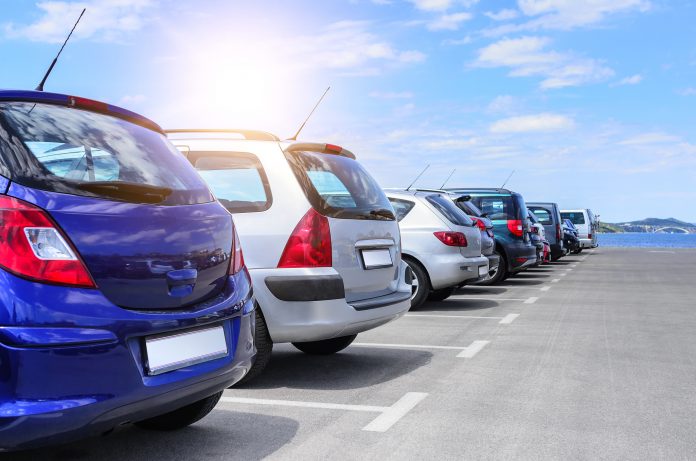Addressing the issue of expanding car sizes, the importance of parking bays in regulating growth is evident. Let’s explore the concerns and potential solutions in the U.K.
Are bigger cars a problem, and if so, what can be done about it?
The role of the parking bay in controlling car size
A primary concern about the increase in car size is their threat to public safety, with an increased risk of driver and pedestrian fatality. There is a terrible irony to this, as large cars are often bought for perceived safety benefits – but are a more significant threat to life than smaller cars.
A 2022 study of reported vehicle crashes on pedestrians and cyclists showed that children are eight times more likely to die when struck by an SUV than those hit by a passenger car.
Suppose more is needed to encourage better regulations.
In that case, we should remember that this is in addition to the danger to life through worsening air quality, which is only beginning to be understood.
Globally, SUVs have been one of the top causes of CO2 emissions growth over the last ten years. Breathable air has worsened substantially in this period, and the effects of unregulated car size on our health are as powerful as ever and worsening.
Bigger cars are a more significant threat to road safety and the air we breathe.
Bigger cars mean less space for everything else
Bigger cars mean less space for everything else, less space for pedestrians due to pavement parking, less road space for safely overtaking cyclists, less available land such as green spaces, and so on.
Reduced public spaces due to larger cars also significantly impact people’s perceptions of safety.
When public space, including roads and pavements, is considered unsafe, people are less likely to want to walk, wheel, or cycle. This impacts their health and finances and worsens pollution as people are driving short journeys rather than travelling actively.
The Sustrans Walking and Cycling Index (2021) showed that 29% of respondents think it is safe for their children to cycle in their local area, while only 52% believe it’s safe for children to walk. As cars get more prominent, these stats are likely to worsen.
There is also a threat to the longevity of the highways, as larger cars can do more damage to the carriageway than smaller ones. This impacts all road users, including drivers of smaller cars and cyclists.
Bigger cars are expensive and therefore reserved for those who can afford them; however, the impact on public space affects everyone.
We risk car sizes becoming too impractical for our roads, increasing the threat to safety and consuming space that should be dedicated to the public, not just big vehicles.
We have control over this trend, and if acted on, we can create healthier, happier places for everyone.
What role can parking bay sizes play?
Previously, the size of a standard parking bay acted as a design constraint for car manufacturers, as the size of the bay partly limited car growth.
However, since the re-publication of Traffic Signs Regulations and General Directions in 2016, the standard of 2.4m wide and 4.8m long parking bays has been eliminated because there is no maximum parking bay size in the UK.
This has meant that the number of cars being manufactured has increased without restrictions, creating a cycle of damaging and unnecessary growth, as parking bays also enlarge to accommodate the ever-expanding size of new cars.
Consequently, this consumes space and allows the trend in car growth to continue.
The solution is proper regulation of manufacturing
Increasing the size of parking bays for larger cars will solve nothing and encourage the development of more significant, dangerous, and polluting cars.
The solution is proper and thorough regulation of manufacturing, vehicle registration, and design law, for example, in the ‘Traffic Signs Regulations and General Directions’.
In this regulatory law, we must see an established definition for the maximum size of a parking bay on the grounds of long-term prioritisation of safety.
Send a clear message to manufacturers
The maximum size of a parking space should be uniform: 2.4m in width and 4.8m in length for a perpendicular parking bay, 1.8m in width, and 4.5m in size for a parallel parking bay.
Establishing this would send a clear message to manufacturers about limiting car size and clarify that the priority must be public health and the environment.
What looked like a slight change in design regulations in 2016 now threatens to impact life in the UK in ways that will be felt for decades if nothing is done.
Space within a large car may be nice, but playing in public areas, so people can feel safe to walk and cycle to work or school, attend medical appointments, or go to the shops, is what people want and need.
All in all, they want to live without fear of vehicles and with safe air to breathe. A simple regulation, setting the maximum parking bay size, can help achieve that.
This piece was written and provided by Ruth Carlson, an Engineer in Sustainable Transport and the recent winner of the Institute of Civil Engineers London regional final of the Emerging Engineers Awards, with research into the worrying trend in car growth due to lack of regulation.











